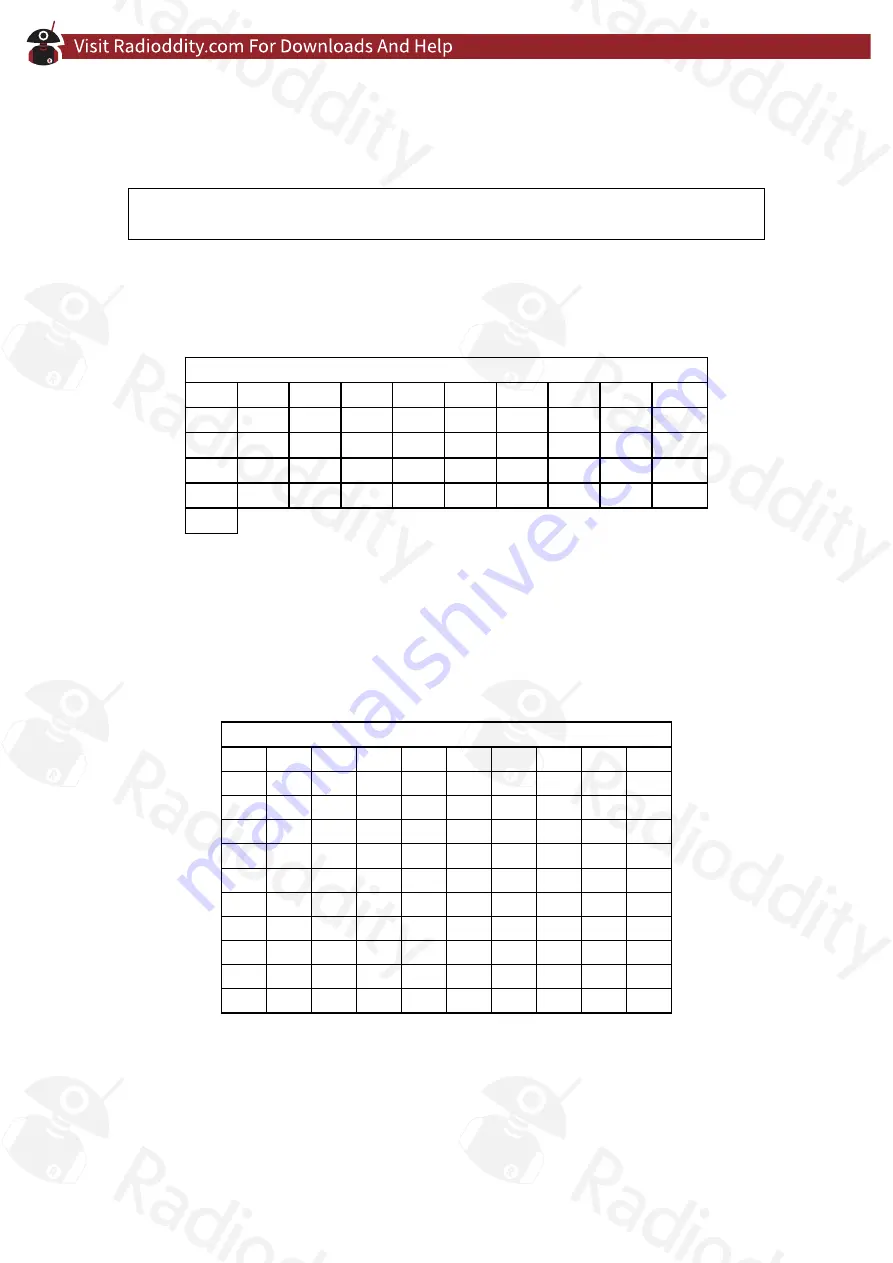
English user manual - Radiod
d
ity GD-73
v1.0
Page 31 of 56
you will receive all signals of the selected reception frequency within the reception
range.
CTCSS (Continuous Tone-Coded Squelch System) and DCS (Digital-Coded Squelch)
are two slightly different methods, but both achieve the same result.
Note
The transmission of CTCSS or DCS is only possible with analogue channels.
CTCSS
The CTCSS feature is often used to enable access to a repeater. The GD-73 supports
51 standard CTCSS subedited tones.
CTCSS
62,5 67,0 69,3 71,9 74,4 77,0 79,7 82,5 85,4 88,5
91,5 94,8 97,4 100,0 103,5 107,2 110,9 114,8 118,8 123,0
127,3 131,8 136,5 141,3 146,2 151,4 156,7 159,8 162,2 165,5
167,9 171,3 173,8 177,3 179,9 183,5 186,2 189,9 192,8 196,6
199,5 203,5 206,5 210,7 218,1 225,7 229,1 233,6 241,8 250,3
254,1
All frequencies given in Hz
DCS
DCS on the GD-73 has 214 (2*107) different codes, which can be set by both the PC
software and on the radio itself. DCS also distinguishes between normal DCS and
inverted DCS.
DCS
17
23
25
26
31
32
36
43
47
50
51
53
54
65
71
72
73
74
114 115
116 122 125 131 132 134 143 145 152 155
156 162 165 172 174 205 212 223 225 226
243 244 245 246 251 252 255 261 263 265
266 271 274 306 311 315 325 331 332 343
346 351 356 364 365 371 411 412 413 423
431 432 445 446 452 454 455 462 464 465
466 503 506 516 523 526 532 546 565 606
612 624 627 631 632 645 654 662 664 703
712 723 731 732 734 743 754
All frequencies given in Hz
CTCSS and DCS are added to the voice transmission in order to positively identify it
as a valid transmission to a similarly equipped receiver. Without a matching CTCSS
or DCS code, the receiver will remain quiet. This is useful to negate the effects of
interference or other unwanted transmissions.
















































